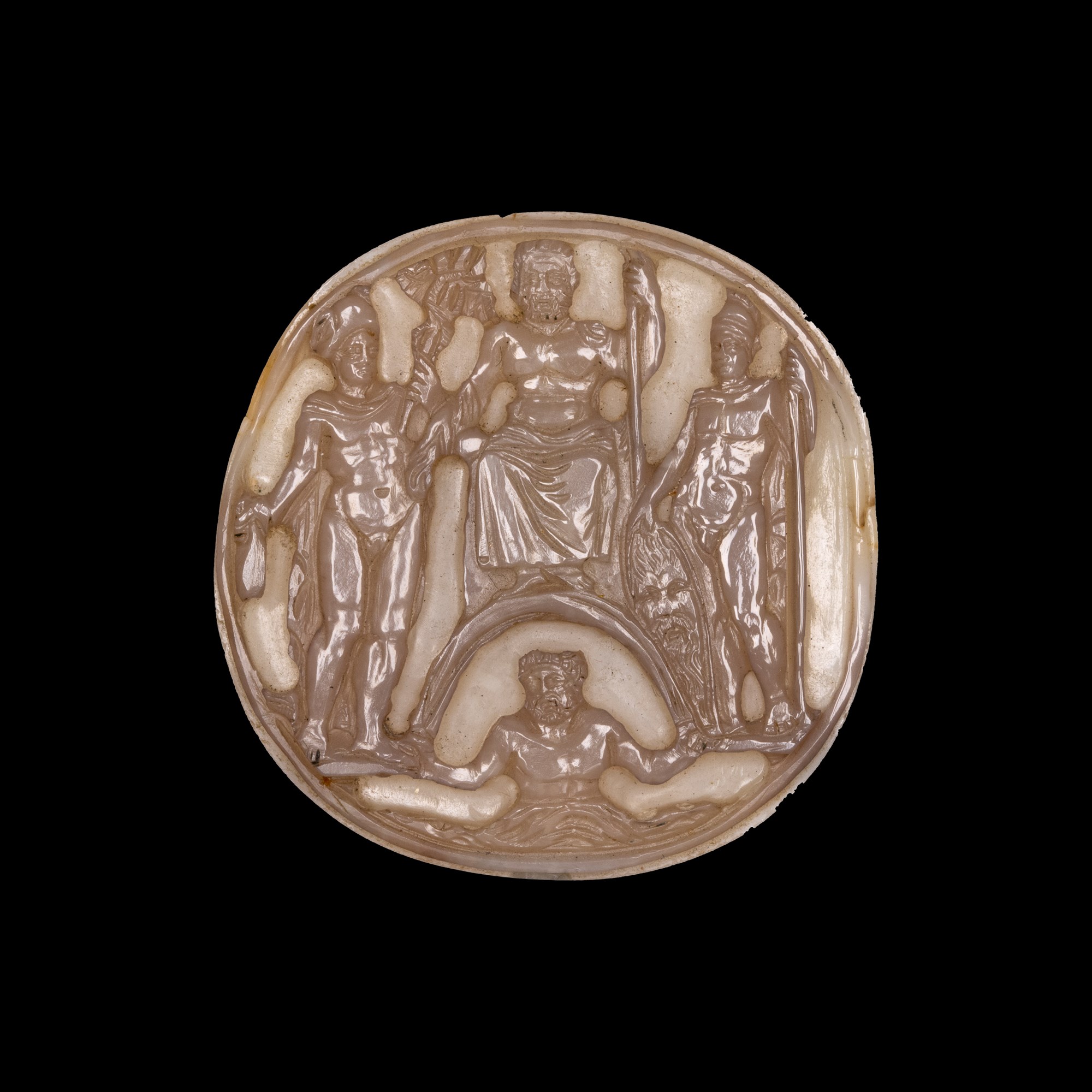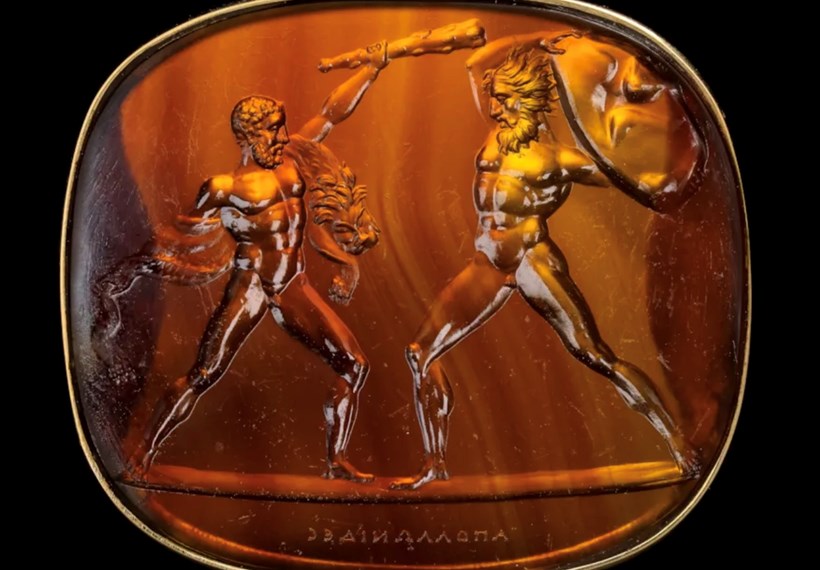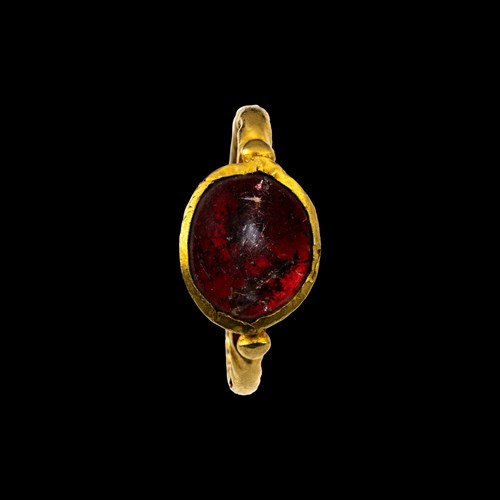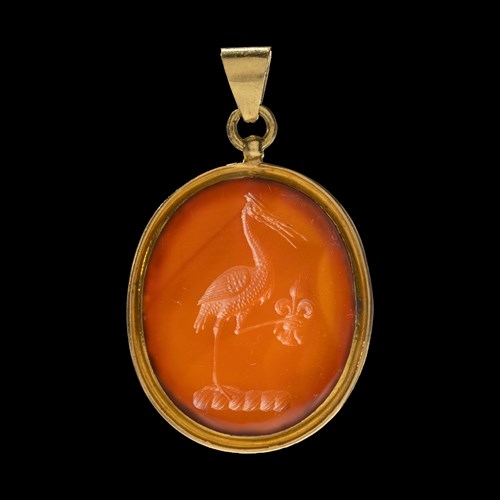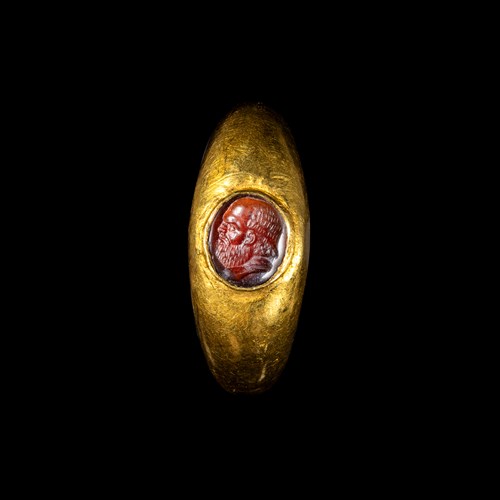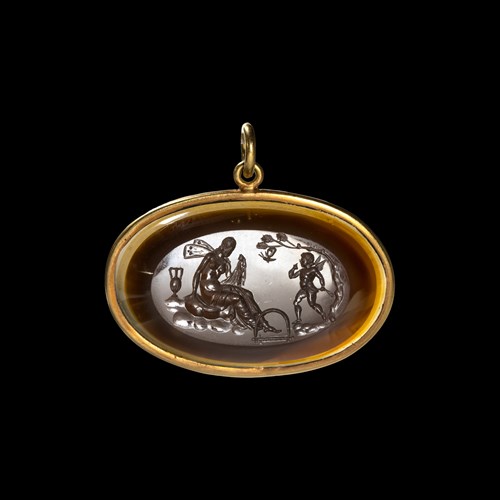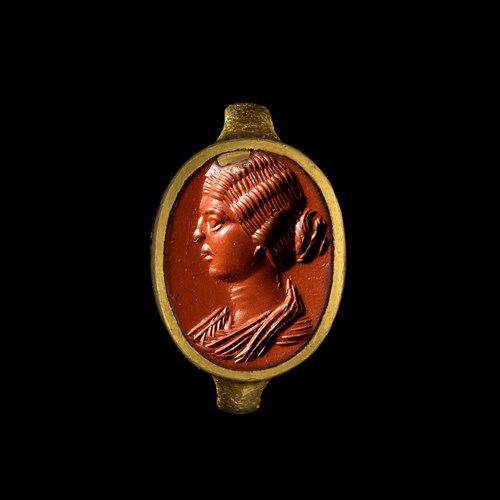A Renaissance agate cameo. The Olympian gods.
Date Late 16th century - 17th century
Period Renaissance
Origin London, consignment
Medium Agate
Dimension 3.9 x 3.9 x 0.4 cm (1¹/₂ x 1¹/₂ x 0¹/₈ inches)
The pyramidal arrangement of the group is consistent with the Renaissance virtues of harmonious stable and unified composition adopted by Giorgio Vasari, in reference to Raphael's 1516 drawing for the frontispiece of the Aeneid, and engraved by Marcantonio Raimondi (1430-1534).
Yet in this work, the absence of the zodiacal frame suggests that the piece was part of a larger work.
Three other such Renaissance Zodiacal gems are known:
- The first, in the Hermitage Museum, St Petersburg (inv. no.3706; described as Italian, 16th Century).
-The other comparable gem is in the Cabinet des Medailles, BnF, Paris (inv. N°58.2391, This is of exceptional quality and seems likely to have been in the collection of Peirsac (1580-1637), the eminent French antiquarian of the early 17th century, and was acquired by the French Royal Collection).
- The onyx intaglio (The Walters Art Museum, inv. 42.502) identified as 4th century AD or 16th century. The Arundel Zodiac (Sotheby's, July 15 2021, lot 11).
Beautiful conservation and large dimension.
Date: Late 16th century - 17th century
Period: Renaissance
Origin: London, consignment
Medium: Agate
Dimension: 3.9 x 3.9 x 0.4 cm (1¹/₂ x 1¹/₂ x 0¹/₈ inches)
Provenance: Private collection of Mr. F.A, acquired on the art market in the 1980s
Then by descent
Literature: Brown, Clifford Malcom. Engraved Gems. Survivals and Revivals. Washington : 1997, p.199 et 221, n°101.
Chabouillet, Anatole. Catalogue général et raisonné des camées et pierres gravées de la Bibliothèque impériale. Paris : 1858, n°2391.
Mariette, Pierre-Jean. Traité des Pierres gravées. Paris : 1750, II, pl.I. BNF Medailles at Antiques Archive: inv.58.2391
More artworks from the Gallery


